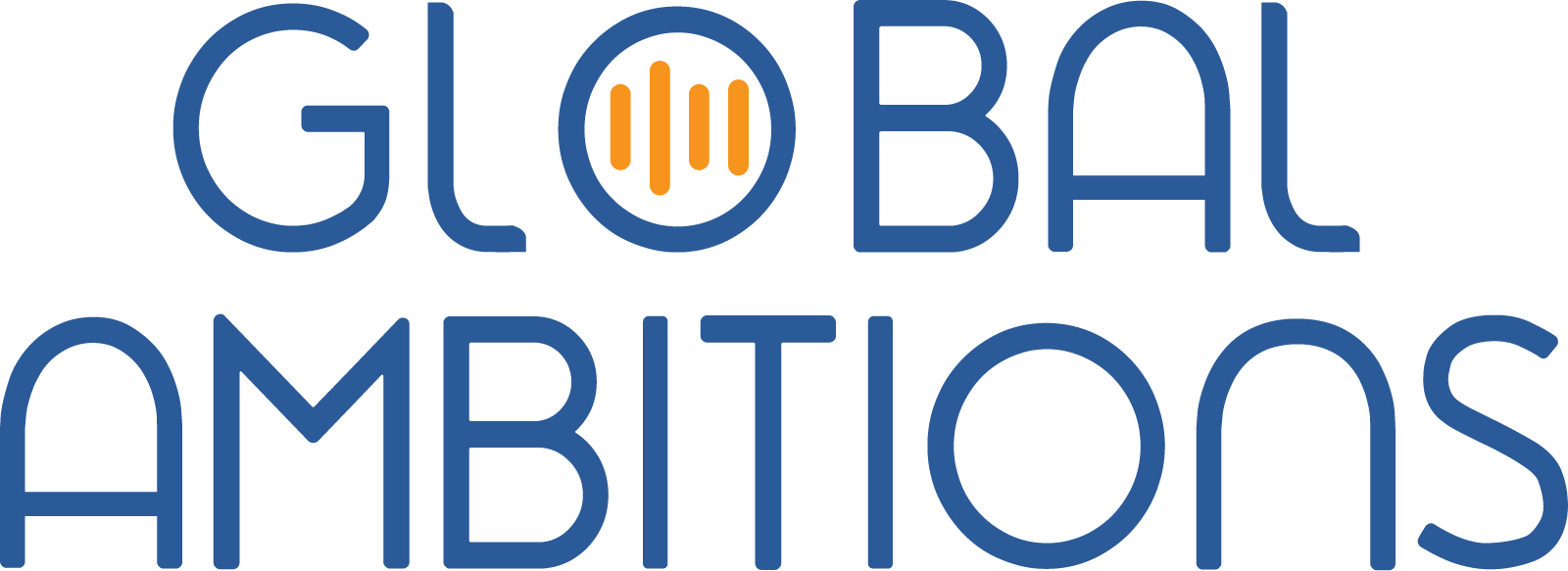With Giulia Tarditi, Head of Global Experience at Qualtrics
Below is an automated transcript of this episode
Antoine Rey: 0:18
Hi, I’m Antoine Rey and I will be your host today for this Global Ambitions podcast episode, and my guest today is Giulia Tarditi, and Giulia is head of Global Experience at Qualtrics, and today we’re going to be talking on how to measure success of your localization approach. Julia, welcome to the program.
Giulia Tarditi: 0:36
Thank you very much. It’s great to be here.
Antoine Rey: 0:39
Great, i’ll dive straight into it. So you and I had a conversation and you built a very interesting language data program at Qualtrics where you’re measuring both operational data but, more importantly, measuring how on track you are to becoming a global company and how successful your internal stakeholders are with their international OKRs. Can you tell us about what you’ve built and explained a little bit?
Giulia Tarditi: 1:07
Yes, of course, our team owns the strategy and governance for how we localize our offering at Qualtrics. And, of course, delivering to the market products and services that are culturally, contextually and linguistically relevant to prospects and customers and meet their needs is vital for us to be a global success story. We knew, though, that, without data, this would only be a nice sentence placed somewhere on a team scope description, and so, when we started, the goal was to build the center of excellence from scratch, and one of the pillars was a data program. We divided the data that we wanted to track into two big buckets. One was operational, sort of what we call black box data We got everything related to, once the content enters our ecosystem, what do we do with it, how fast we translated, how much we spend, how many errors, et cetera, how much we pay for words, and this is stuff that our stakeholders may or may not want to hear about. We know that our customers definitely don’t care, but sometimes people don’t realize that your colleagues don’t care either. Of course, they’re marginally interested that you do the right things and have an interest as soon as that content enters your ecosystem, but they don’t want to be in the nitty gritty of it.
Then the second bucket of data that we knew we wanted to track was data that do matter to our stakeholders. They’re the things that our colleagues want to hear about, starting from peers in the marketing team all the way up to the CEO of Qualtrics. What if you get stuck in the left with the guy and you want to give him your elevator pitch explaining why he pays your salary? And so I guess, even within these two buckets, there’s two different things you want to track. One is the perennial KPIs. Those don’t change very often. There are the things that and they will be slightly different depending on the type of business you’re in, but for us there are things like annual recurring revenues and expansion of business with existing customers, top spending, and this data is data that we want to track over and over again.
Then there’s other things that are more contingent and are linked to, perhaps, company strategy for the next 12 to 24 months, like growing monthly active users or decreasing the number of escalations related to a specific vertical, and we knew that what we wanted to do was doing two things First, showing a picture of how those data was looking like in English versus non-English markets, and then we decided to try, because we wanted to give the organization a leadership, a good picture of where we were at in our journey to become a global company, which also means a global customer base and a global revenue stream, not just coming out of a single country for as powerful as it can be.
The second thing we wanted to do was showing a clear impact of every dollar we were spending in our organization. How was it affecting those metrics? Could we find patterns and could we check what metrics? were we or were we not moving? For example, one of our localization work streams is directed at making digital marketing events multi-lingual. We knew that the goal for those events was pipeline. We wanted to see does pipeline goes up in non-English-speaking markets when we localize, and does it go up more or less, depending on how we do things Localize everything from the get-go, do it with humans, do it with machine, etc. We knew this were very important talking points because we wanted stakeholders, we wanted the C-suite to take it seriously.
We also wanted to understand because the localization function was new metrics what we could impact the most. This is something that every team needs to discover for themselves and that only a really good data program can flash out Again, bucket one productivity internal black box doesn’t matter to anyone besides yourself and your team and maybe your immediate reporting line. But then there’s all this stuff that matters way more Because your company doesn’t really pay you to be productive. They pay you to be productive because it has an impact on the company’s bottom line.
Antoine Rey: 5:51
On revenue.
Giulia Tarditi: 5:52
Yes. Now, the biggest challenge was not getting people to listen, because as soon as we had the data points that were ready to listen, we were showing that we were already an international company and that that component was growing. The challenging thing was getting the data out of the various systems, because I don’t know in other companies, but at QuiltTrace we would have different sources of truth for different data coming out of, like whether it’s a product data or marketing data or support data, financial. They’re all in different systems. Although the North Star would be for us to have a dynamic dashboard that calls automatically all of this points and can give you a picture that is live, we are not that. So there is work that goes into updating a static version of that dashboard, pulling in the data that we have chosen with cherry picked across the various system, slicing it through with a language lens. Discadences could be monthly or fortnightly or quarterly, depending on what we’re looking at. It doesn’t make sense to look at annual recurring revenue figures every week.
You would perhaps want to keep an eye on them on a quarterly basis. Usage data, on the other hand, can be a bit more frequently pulled Then, if we want to look at things like pipeline data. We got to wait 60 days or so after the events, so it has specific cadence that is dependent on a specific launch. But, yes, this is how we do it right now. It’s not perfect and we’re doing things to make it more automated.
Antoine Rey: 7:39
That’s the holy grail for a lot of companies. To your point, getting the operational data is very easy. You have a TMS and that allows you to measure your suppliers, your translators, to measure your spend and keep finance happy. I guess to a certain extent. But then that second bucket you’re talking about is the difficulty seems, for a lot of people Where do you get the data? Whose door do you push to get access to the data? And then the second question out of this once you’ve managed to gather that data, how much of that do you attribute to localization?
Giulia Tarditi: 8:18
Yeah, i don’t think you need to attribute it to a single thing, you’re just showing it right. Of course, if you’re able to show that, if you localize it moves by X, and if you don’t localize it moves by half of X, then all the better. Of course, there may be other things at play, but to me, the localization function has a very big mission, which is to surface this data without necessarily claiming them for yourself, but to make aware your colleagues of their existence, of this way of slicing through the data and this way of just helping the organizational leadership to build a habit of looking at this data on a regular basis. No one else is going to care enough to surface this data because they will all, at least in initial stages of a company’s maturity, they will all be focused on the English-speaking markets, which are the biggest market. But it’s your mission to surface this data. You don’t need to claim the success of it, the success in and how you build the profile of being the leader who brings this stuff to the table, who puts the executive in front of this data and says this stuff matters.
Antoine Rey: 9:40
I guess I always advise clients it’s not necessarily who do you attribute to, but certainly, if you present it, it’s going to be attributed to you somehow. I always advise clients to gather the information, create your dashboard and present it at every opportunity you have to your C-suite, to your all-hands, to your stakeholders, wherever that might be. I think indirectly, then, it’s going to be associated with localization, which is what you want to to a certain extent.
Giulia Tarditi: 10:13
Exactly Great leadership is not claiming Yeah.
Antoine Rey: 10:18
I think I like your idea as well. At some stage where I believe you unplugged localization to see how they would react.
Giulia Tarditi: 10:26
Yeah, this is something that I’ve done at a couple of companies, sometimes to prove that localization does have an impact in the absence of a lot of data points, etc. All you got to do is pull the plug and say, okay, so let’s find two comparable things, whether it’s two events or two product launches or two landing pages. For one we just localize the hallway and the other one zero. We launch it across all markets with no localization in place. And you need to be very firm and very strict, because your stakeholders don’t want to hear it, they don’t want to risk it. So I guess, if you want to see the glass hour full, it means they know that localization matters because they don’t want to go without it. But you’re like, well, you’re always questioning how much it matters, so let’s go without it and let’s see what happens. So you got to have the guts to pull the plug, because pulling the plug shows very clearly that no localization means way lesser an impact in certain markets, and we’re not talking about simply denying you to speak in markets.
I think this is a perhaps the biggest mistake that people make when pitching localization internally, especially within a B2B space. It’s not just people outside of you know, big spending power markets like the US and the UK and Ireland who benefit from localization and are going to grow as a result. What about your top spenders? They may be based in Seattle and have a big budget, but they have customers across the globe, and if you can’t provide those localization capabilities, they will seek them elsewhere. So you will grow by investing in those localization capabilities. You will also have an impact on how much the big spenders spend and how much they stick around, and so it’s very important because otherwise, if you are the localization owner, there will be people in the business that will try and push you in that corner. You only belong in the non-English corner. This is an English initiative, but this is an American initiative. It’s wrong.
Antoine Rey: 12:42
I think a lot of our listeners on the client side are struggling ways to get to that data. It’s like whose door do you push, how do you build that sphere of influence you’re going to need And where do you get the data, and it’s like those kind of advice and tips of what you’ve done. That is very useful, i think.
Giulia Tarditi: 13:01
Well, you’ve got to be good at building relationships right, because it’s the best way to get someone to listen and to care enough to generate an export from a tool you don’t have access to. Hey, would you mind giving me that? You can only do if you’ve got a good relationship. You’ve got a map out, who has access to what you know generally, an intranet and a bit of chats around the coffee machine coming very handy, but with some people it doesn’t work, with some teams it really doesn’t.
And you’ve got to be the bad guy. And you’ve got to say you know, if you don’t give me the data, if I don’t see what happens and the impact after I send you the translations, i’m just not going to give you the translations. What we did in an earlier phase was pulling the plug and saying no KPI on a service. You don’t want to measure the data. We’re just not going to do it, and that made them give you the data. You just got to be able to. sometimes, you know, sometimes you got to be the bad guy And it’s something very challenging for localization. Somehow we invest into building this brand to be everybody’s friend and buddy and, you know, to be super available, to be the one always saying yes.
Antoine Rey: 14:16
Did you feel you needed to have the support of your management or the VP above even that before you take such a drastic, you make such a drastic move somehow?
Giulia Tarditi: 14:27
I would say, rather than asking you, inform the leadership that this is what’s going to happen, right, and you’re like, as long as you position it as a strategic move, you’re like it’s a means to an end, right, the goal is not not to give localization to those guys. The goal is for them to understand that they need to give me the data. Nothing matters if you can’t measure it. You can’t throw money at a problem and let it fall into a dark hall. You got to see what happens, because otherwise you can’t iterate, you can’t finance, you don’t know if you’re on the right path, you just spend and spend And so, even if you’ve got really good gut feeling or experience, there’s a lot of waste.
Antoine Rey: 15:11
Yeah, all right, we’ve come, unfortunately, because it’s a great conversation, but we’ve come to the end of our episode there. But, julia, thank you so much for participating in this podcast. I’m sure there’ll be a lot of interest in that episode.
Giulia Tarditi: 15:24
Thank you so much. It was great to participate.





